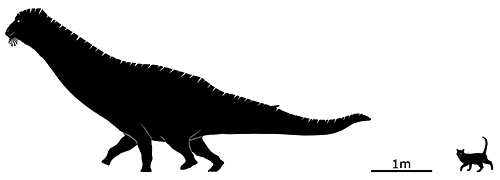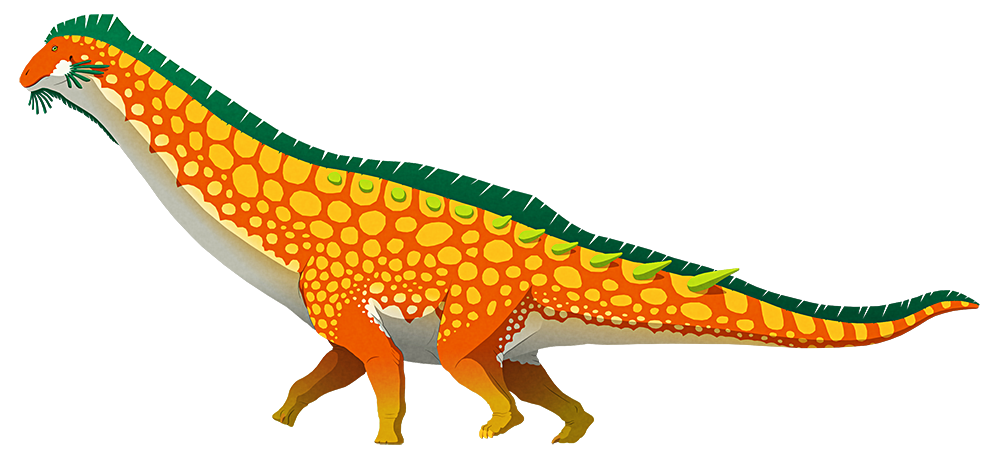At the very end of the Cretaceous period, between about 72 and 66 million years ago, tectonic uplift from the start of the formation of the Alps created an island in the area corresponding to modern-day Romania.
Known as Hațeg Island, after the region where fossils of the native species were found, it was similar in size to Hispaniola and was surrounded by deeper waters than most of the other European archipelago islands.
Magyarosaurus here was was a titanosaur living on this island, and was one of the smallest known of all sauropod dinosaurs at just 6m long (19’8″). Much of that length would have been in its neck and tail, and its body was only actually about the size of a horse.
Like some other titanosaurs it had bony osteoderm armor along its back, although since only one isolated piece has been found the exact arrangement isn’t known.
Discovered by Franz Nopsca (the gay Transylvanian baron-paleobiologist-spy), in the early 1900s, it was one of the first dinosaurs proposed as an example of insular dwarfism. Later researchers disagreed with this hypothesis, suggesting instead that the Magyarosaurus fossils were just juveniles – and it wasn’t until 2010 that studies of bone microstructure proved that these miniature sauropods really were fully grown adults.


